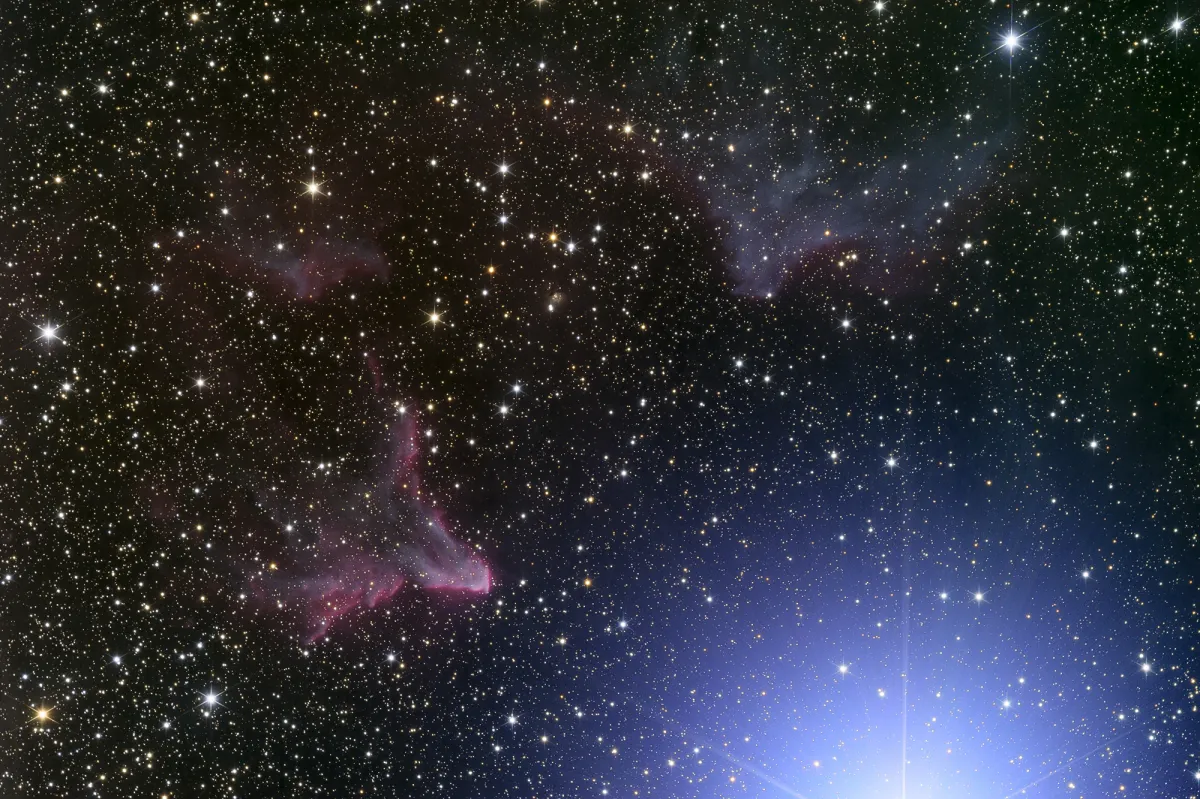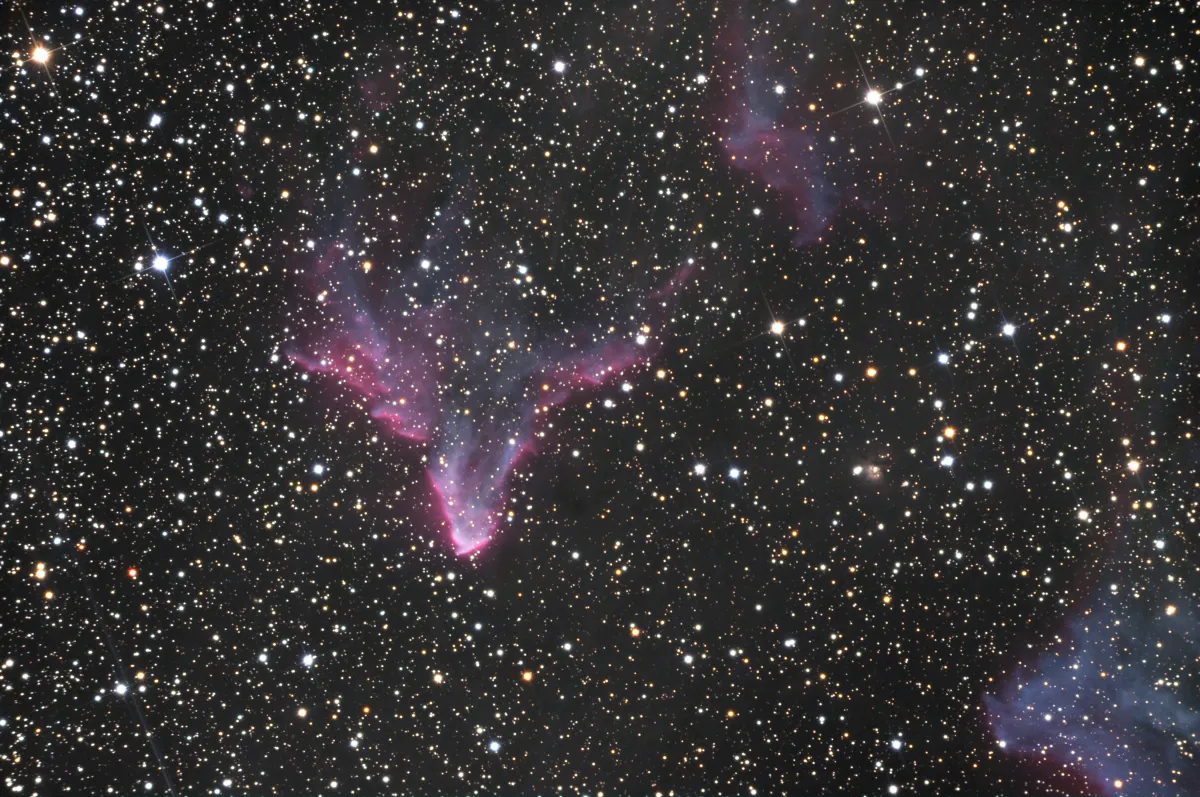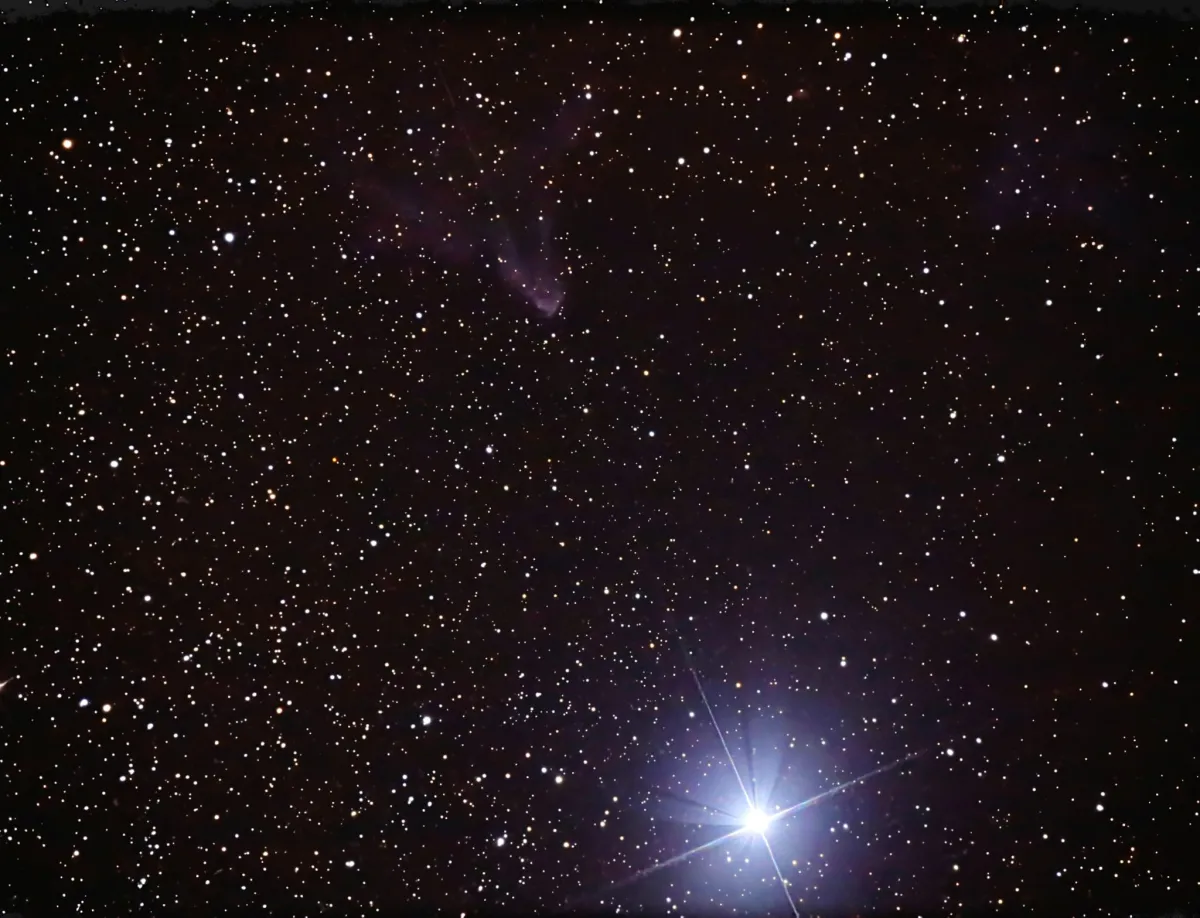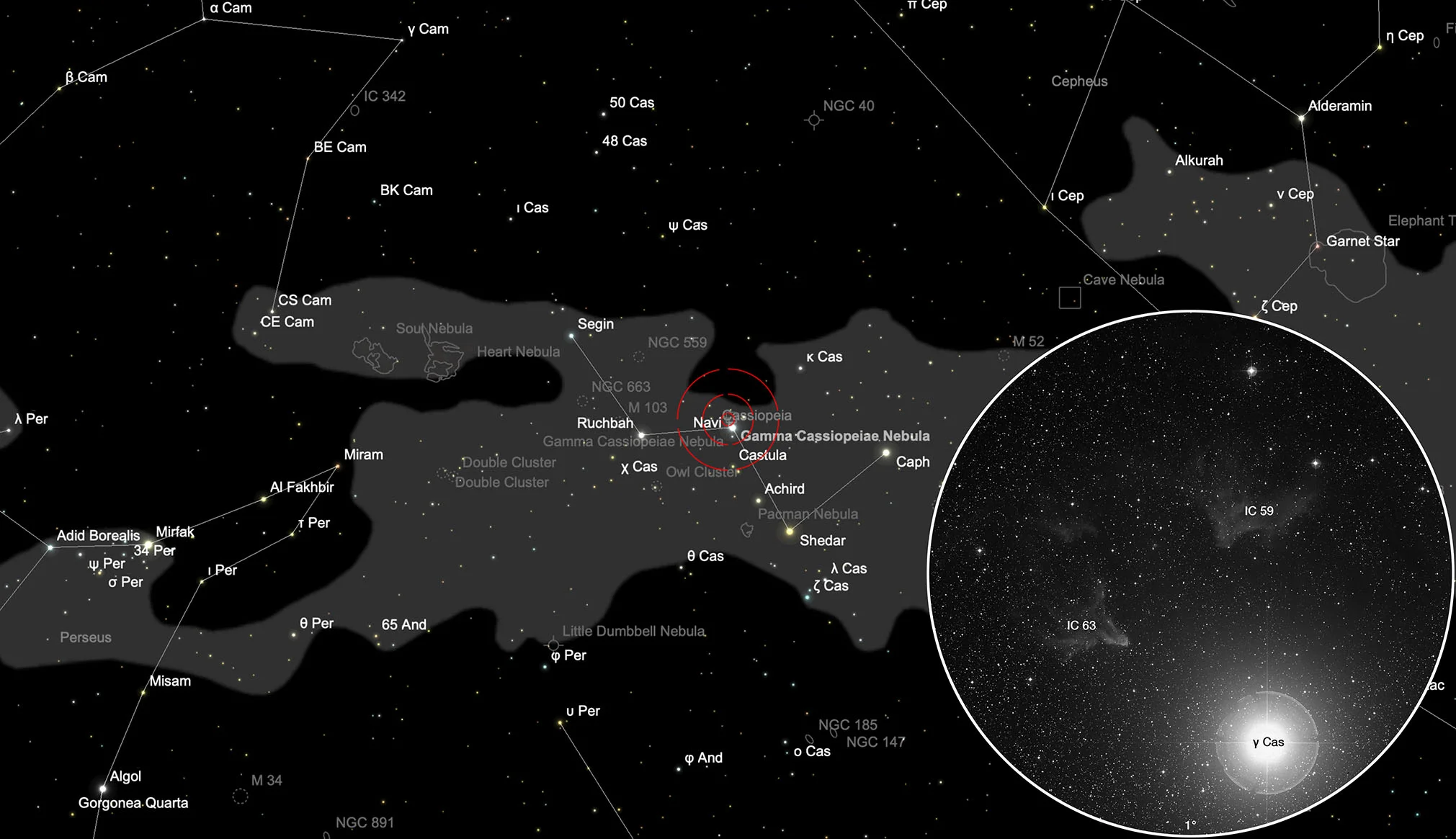Gamma Cassiopeiae Nebula (IC 59/63)
History
The German astronomer Max Wolf discovered the two nebulae IC 59 and IC 63 near the star γ Cassiopeiae on 30 December 1893. The American astronomer Edward Barnard rediscovered the two nebulae independently on 2 February 1894. The British astronomer Isaac Roberts made γ Cassiopeiae of the star γ as early as 17 January 1890, but despite a 20 inch aperture and 90 minutes exposure time, no nebula could be seen on the picture. [196, 206]


Physical Properties
The two nebulae are about 600 light years away. The hot, bright star γ Cassiopeiae shines only three to four light-years away from these, whose high-energy radiation is reflected in the nebulae, causing them to glow in part, but which will dissolve completely over time. IC 63 is located closer to the star and glows more strongly in the H-α light, as the UV radiation from the star causes hydrogen to ionize. Due to the greater distance to the star, IC 59 shows proportionally fewer H-α emissions, but rather appears bluish due to the fact that it is reflected in the dust. [352]
| Name | RA | Dec | Type | Dim | MD | Dreyer Description | Identification, Remarks |
|---|---|---|---|---|---|---|---|
| IC 59 | 00 57 28.5 | +61 08 37 | EN | 10 × 5 | 0.610 | pF, eL ! (nf γ Cassiop) | LBN 620; Gamma Cas nebula |
| IC 63 | 00 59 29.0 | +60 54 40 | EN | 10 × 3 | 0.610 | pF, eL ! conn with np one | LBN 623; CED 4B; Gamma Cas nebula |
Finder Chart
The Gamma Cassiopeiae Nebula is, as one might expect, in the constellation Cassiopeia. On 9 October it is in opposition to the Sun and crosses the meridian at local midnight. It is circumpolar for Central Europe and is highest at night in the months of June to March.
Visual Observation

400 mm Aperture: In the 13 mm Ethos, IC 63 is indirectly recognizable as a V. IC 59 appears larger but fainter and more diffuse. In the 21 mm Ethos, the nebulae are only discernible when the star γ Cassiopeiae is placed outside the field of view. As expected for a reflection nebula, an O-III filter makes it disappear. — 400 mm f/4.5 Taurus Dobsonian, Hasliberg, 16. 12. 2023, SQM-L 21.2, Bernd Nies
762 mm Aperture: Visually, as well as in the EAA photo with a short exposure of only 10 seconds, the reflection nebula IC 63 appears very nicely V-shaped. The much larger and fainter IC 59 can also be found in its neighbourhood. — 30" SlipStream-Dobson f/3.3, Hasliberg, 16. 12. 2023, SQM-L 21.38, Eduard von Bergen
